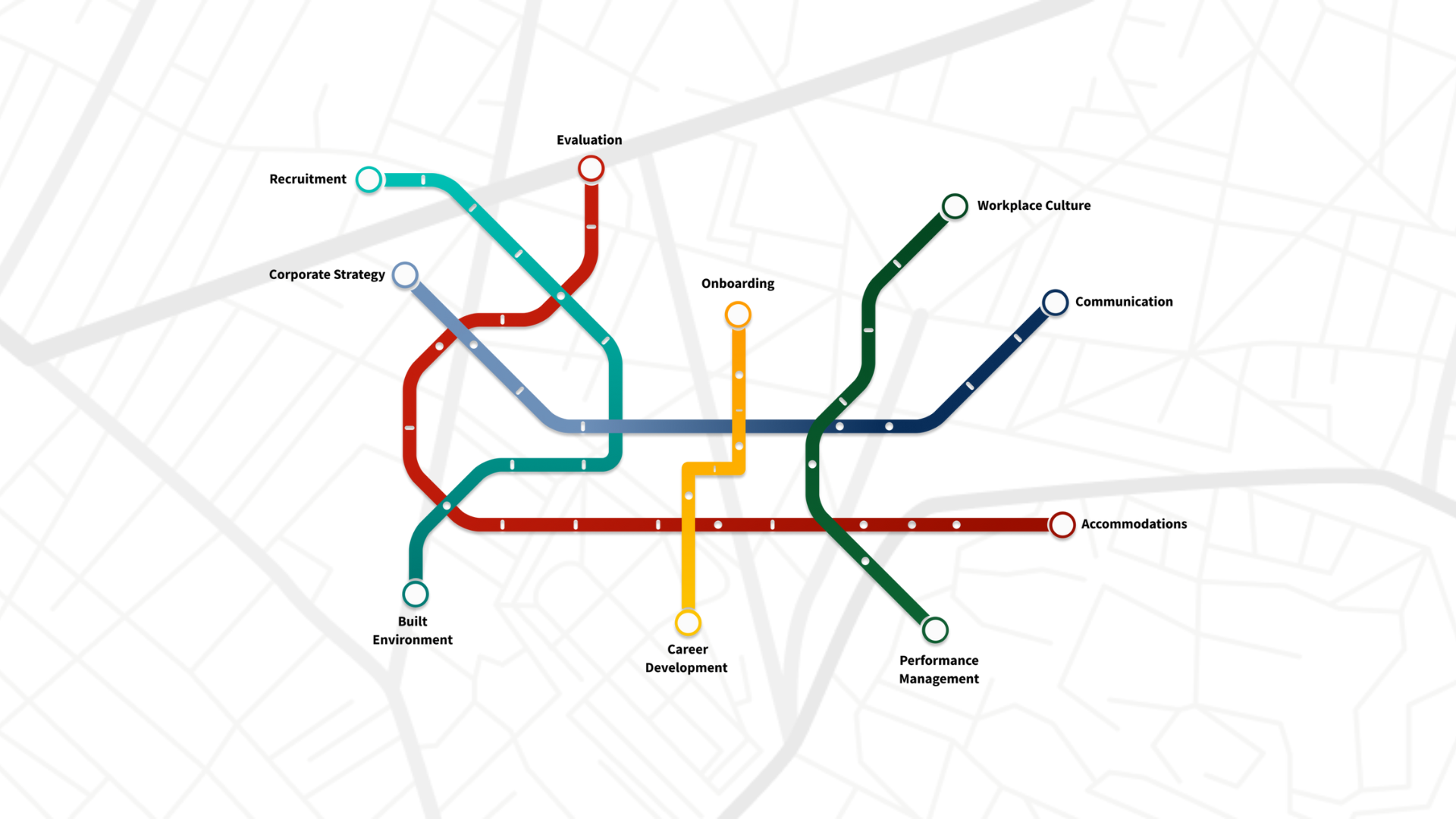July 2, 2025
Disability Confidence in Action: Why ASL Interpreters Belong at the Centre of Workplace Inclusion

When public officials, presenters, chairs of meetings, or event hosts are presenting or leading a conversation, they’re not just delivering a message, they’re shaping the accessibility of that moment.
Recent comments by Manitoba’s Accessibility Minister, who described an American Sign Language (ASL) interpreter as “distracting” because of their proximity on stage have sparked important conversations about what true inclusion looks like in presentations.
Let’s be clear: ASL interpreters are not distractions. They are essential communication supports that enable Deaf and hard-of-hearing individuals to fully participate in public life.
Their presence on stage is not a courtesy, it’s a right protected under accessibility legislation, including Manitoba’s own Accessibility Standard for Information and Communication.
Why Proximity Matters
One of the most critical best practices when presenting with an ASL interpreter is physical proximity. The interpreter should be positioned close to the speaker, ideally within the same visual field. This allows Deaf audience members to follow both the speaker’s expressions and the interpreter’s signing without having to shift their gaze back and forth. It’s not just about convenience, it’s about cognitive accessibility.
This principle is echoed in Manitoba’s Accessibility Standard for Information and Communication, which requires organizations to provide communication supports, including ASL interpretation, upon request. The standard emphasizes that these supports must be effective, timely, and respectful of the individual’s dignity.
ASL in the Workplace
For many, they haven’t worked with someone who communicates through an ASL interpreter. This is why it’s important to develop your disability confidence, so you can navigate these moments.
Manitoba’s Accessible Employment Standard reinforces this by requiring employers to offer accessible formats and communication supports to employees, upon request. It also mandates the development of individual accommodation plans and training for staff on accessible employment practices. This is why we encourage people to complete our Disability Confidence Training, so they have the knowledge to not just be compliant with accessibility standards but to be able to confidently navigate disability in the workplace.
Working with ASL Interpreters in Meetings and Boardrooms
In meetings, whether internal team huddles or formal boardroom discussions, working with ASL interpreters requires intentional etiquette and thoughtful positioning. One of the most important principles is this: always engage directly with the Deaf or hard-of-hearing participant, not the interpreter. Speak to the person, make eye contact with them, and direct your comments to them. The interpreter is there to facilitate communication, not to become the focus of it.
In boardrooms or meeting spaces, interpreters should be positioned so that the Deaf participant can see both the interpreter and the speaker without needing to turn their head. This often means placing the interpreter beside or slightly in front of the speaker, within the same line of sight. Avoid placing interpreters behind the participant or off to the side, as this creates unnecessary strain and can lead to missed information or cues.
If visual materials are being used, like slides or whiteboards, ensure the interpreter is not blocked from view. It’s also helpful to provide interpreters with agendas or presentation materials in advance so they can prepare for technical terms or acronyms.
Using ASL Interpreters in Teams, Zoom, and Google Meet
Virtual meetings are now a staple of modern work, and ensuring they are accessible to Deaf and hard-of-hearing participants is essential. Fortunately, platforms like Zoom, Microsoft Teams, and Google Meet have introduced features specifically designed to support sign language interpretation.
Zoom
Zoom offers a dedicated Sign Language Interpretation View. When enabled by the host, this feature allows up to 20 designated sign language interpreters to provide their own video channels. Participants can then select the interpreter’s video stream, resize it, and position it anywhere on their screen. This ensures interpreters remain visible throughout the meeting without relying on standard layout views. Note: This feature must be enabled when scheduling the meeting and requires the Zoom desktop client.
Microsoft Teams
Teams includes a Sign Language View that allows users to prioritize up to two signers’ video streams, keeping them in a consistent, high-quality position on screen. This setting can be enabled during a meeting or set as a default in the user’s accessibility preferences. Interpreters can be pre-assigned as “preferred signers,” ensuring they are always visible to the participant who needs them. This is especially helpful for employees who work with the same interpreter regularly.
Google Meet
While Google Meet does not yet offer a dedicated sign language interpretation mode, users can pin the interpreter’s video to keep it visible. It’s recommended that interpreters join the meeting early to ensure proper placement and visibility. Google continues to improve its accessibility features, and third-party tools can also be used to enhance interpreter visibility.
Best Practices Across Platforms
- Always assign interpreters in advance and test the setup before the meeting.
- Encourage participants to use the platform’s accessibility settings rather than relying on manual pinning or gallery views.
- Provide interpreters with agendas and materials ahead of time to support accurate interpretation.
- Remind all participants to speak clearly, pause between speakers, and avoid interrupting, this helps interpreters keep pace and ensures clarity for everyone.
By using these built-in tools and following best practices, organizations can create virtual spaces that are not only compliant but genuinely inclusive.
Embedding Accessibility into Culture
Accessibility isn’t just about compliance, it’s about culture. As highlighted in the CCRW’s 2024 Trends Report, organizations should move from intention to action by embedding accessibility into every aspect of their operations; from recruitment and onboarding to public engagement and leadership.
When we normalize the presence of ASL interpreters in a meeting or during presentations, we’re not just accommodating, we’re affirming that Deaf and hard-of-hearing individuals belong in every space where decisions are made and stories are told.
Final Thoughts
If a presenter finds an interpreter “distracting,” it’s not the interpreter who needs to move, it’s the presenter who needs to shift their perspective and build their disability confidence. Inclusion requires humility, awareness, and a commitment to learning. And it starts with recognizing that accessibility is not an add-on, it’s a foundation.
Learn More

Disability Confidence Training
To help companies and leaders demonstrate the knowledge gained from our toolkit, we have developed the Disability Confidence eLearning course. This course covers each section of the toolkit through interactive exercises that utilize information from the downloadable resources provided.

Shaping Tomorrow | CCRW Trends Report 2024
Annually CCRW releases a report of trends on disability and work from across Canada.
Subscribe
Sign up to receive updates from CCRW.